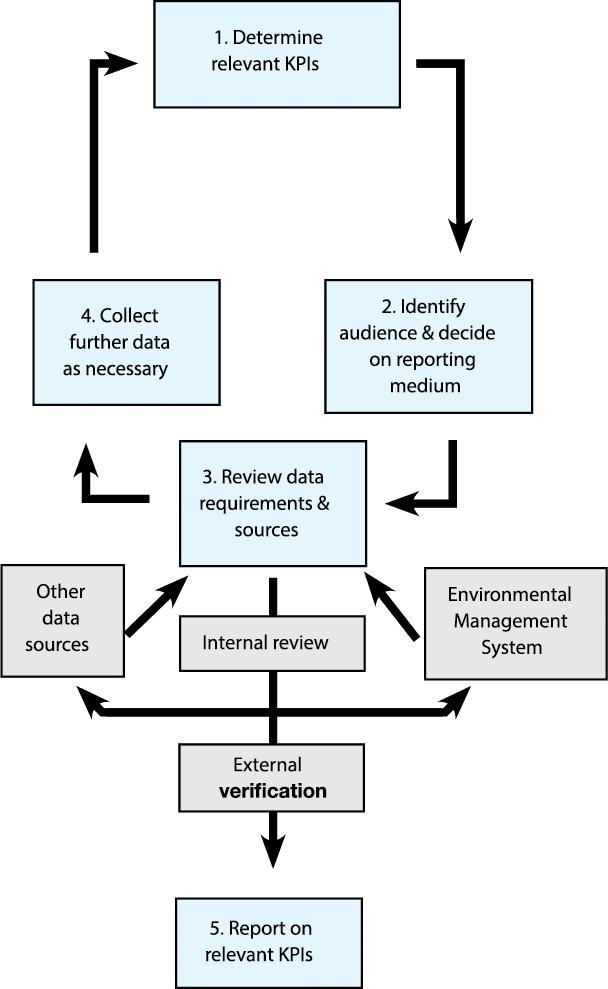
Introduction
Consumers, non-governmental organizations (NGOs), and other consumer groups are increasingly pressuring organizations to offer transparency into their supply chains. Environmental, social, and product safety regulations along with other factors, including consumer and employee trust, customer loyalty, community support and enhanced credibility, are driving some organizations to develop and release sustainability reports. A sustainability report is how an organization publicly communicates the economic, environmental, and social impact of its everyday operations.
Organizations of all sizes, types and industries provide sustainability reports. Some reports are for internal use while others also report externally. These reports provide information about the organization’s responsible sourcing and economic performance. The report becomes the primary means of communicating the organization’s responsible sourcing performance and overall impact of the program on the business and stakeholders.
Environmental Sustainability Key Performance Indicator (KPI)
Before an organization can provide a sustainability report it must establish metrics, commonly referred to as key performance indicators (KPIs), and actively monitor progress towards desired goals. KPIs help organizations define and measure progress towards goals. They are measurable, quantifiable, and demonstrate how effective the organization is in attaining stated objectives.
Monitoring
Continuous monitoring of environmental responsibility efforts is essential to ensuring the success of any program. Effective monitoring mitigates the risk of incidents or violations in the form of environmental impacts from pollution, spills, waste, emissions, noise, energy use, and more.
Regular review of the organization’s environmental activities ensures improvement and validates results for stakeholders. It is considered a best practice to conduct reviews on at least an annual basis and more frequently during the first year of the program. The timing and frequency of inspections should take into account inherent safety, health, and environmental risks. The end goal of effective monitoring programs is a safer and more sustainable environment.
Choosing the right KPIs is essential to the success of any sustainability program. This list will guide organizations through the development of effective KPIs.
- Choose impactful and manageable KPIs.
Too many KPIs make it nearly impossible to focus on those that have the biggest impact. Complete a self-assessment of the organization and take into account inherent safety, health, and environmental risks. Begin with two or three manageable categories and focus on them at a level that is appropriate based on current resources and staff understanding. Over time, additional categories can be added as appropriate. - Make sure that KPIs are measurable.
A KPI must be measurable and relevant in order to provide a positive effect for the organization. Do not choose KPIs that are too difficult to manage. Conversely, do not choose KPIs that are too easy, as while they may be easily trackable, they may not provide truly relevant impact. Appropriateness and effectiveness are mitigating factors for KPIs. - Ensure the KPIs can be improved.
If a specific category is static and has little chance of being changed in some fashion, then tracking it will not provide any return. KPIs that regularly change and can be influenced will provide the most impact and most effective return on investment. - Match KPIs to core business principles and strategies.
KPIs are more easily accepted and implemented when they align with other business strategies. Does the organization subscribe to a reduce, reuse, recycle theology but lack a formal process for monitoring it? If so, attaching KPIs to this program will demonstrate progress, generate enthusiasm from employees, and provide validation to external stakeholders. - Include industry specific KPIs.
The more a KPI relates to the industry an organization is part of, the more useful it tends to be. When it comes to environmental responsibility, consider industry related indicators (ex: ink waste or plastic left over during manufacturing). - Ensure KPIs are meaningful to stakeholders.
Understand what is important to your customers, supply chain partners, the local and global community, and your employees. Unless the KPI has perceived value across several channels it will not be perceived as relevant.

Source: Environmental Key Performance Indicators – Reporting Guidelines for UK Business
Indicators
“Sustainability reporting helps organizations to set goals, measure performance, and manage change in order to make their operations more sustainable. A sustainability report conveys disclosures on an organization’s impacts—be they positive or negative— on the environment, society, and the economy. In doing so, sustainability reporting makes abstract issues tangible and concrete, thereby assisting in understanding and managing the effects of sustainability developments on the organization’s activities and strategy.”
– Source: Global Reporting Initiative Sustainability Reporting Guidelines
The Global Reporting Initiative (GRI) is an international independent organization that helps businesses, governments and other organizations understand and communicate the impact of business on critical sustainability issues such as climate change, human rights and corruption. Every organization is different and each has its own unique challenges. The strategy implemented needs to be reasonable and applicable within the individual business model and resources available.
The GRI has defined basic top level indicators. It is recommended that organizations begin with top level categories and then include subcategories as necessary and applicable. Top level environmental indicators listed by GRI include:
- Materials
- Energy
- Water
- Biodiversity
- Emissions
- Effluents and waste
- Products and services
- Compliance
- Transport
- Overall
- Supplier environmental assessment
- Environmental grievance mechanisms
Subcategories can then be created based on each individual organization. Examples of sub categories may include:
- Monitoring industrial wastewater discharge
- Measuring air emissions
- Buying renewable raw materials and other materials that come from renewable sources
- Maintaining a list of all chemicals being used and introduced to the organization and resulting waste
- Tracking all general waste being generated, and how it is handled and disposed
- Reusing or recycling waste
- Passing waste on to others that can use it as a resource
- Tracking electric consumption and greenhouse gas emissions
- Determining how much fuel is consumed monthly by vehicles and equipment
- Measuring municipal water consumption
Examples of sustainability indicators used worldwide:
POVERTY
- Unemployment rate
- Poverty index
- Population living below poverty line
POPULATION STABILITY
- Population growth rate trend
- Population density HUMAN HEALTH
- Average life expectancy
- Access to safe drinking water
- Access to basic sanitation
- Infant mortality rate
LIVING CONDITIONS
- Urban population growth rate
- Floor area per capita
- Housing cost
COASTAL PROTECTION
- Population growth
- Fisheries yield
- Algae index
AGRICULTURAL CONDITIONS
- Pesticide use rate
- Fertilizer use rate
- Arable land per capita
- Irrigation percent of arable land
ECOSYSTEM STABILITY
- Threatened species
- Annual rainfall
ATMOSPHERIC IMPACTS
- Greenhouse gas emissions
- Sulfur oxide emissions
- Nitrogen oxides emissions
- Ozone deleting emissions
GENERATION
- Municipal waste
- Hazardous waste
- Radioactive waste
- Land occupied by waste
CONSUMPTION
- Forest area change
- Annual energy consumption
- Mineral reserves
- Fossil fuel reserves
- Material intensity
- Groundwater reserves
ECONOMIC GROWTH
- GNP
- National debt
- Average income
- Capital imports
- Foreign investment
ACCESSIBILITY
- Telephone lines per capita
- Information access
Source: EPA Framework For Sustainability Indicators
Online Resources:
PPAI Environmental Responsibility:
www.ppai.org/corporate-responsibility/environmental-responsibility/
PPAI Code of Conduct:
www.ppai.org/corporate-responsibility/ppai-code-of-conduct/
Environmental Protection Agency (EPA):
https://www3.epa.gov/
Laws & Regulations:
www.epa.gov/laws-regulations
United Nations Environment Programme:
www.unep.org/
BLUESIGN System:
www.bluesign.com/
Global Reporting Initiative (GRI):
www.globalreporting.org/Pages/default.aspx
Global Reporting Initiative Sustainability Reporting Guidelines:
www.globalreporting.org/resourcelibrary/GRIG4-Part1-Reporting-Principles-and-Standard-Disclosures.pdf
EPA Framework for Sustainability Indicators:
www.epa.gov/sites/production/files/2014-10/documents/framework-for-sustainability-indicators-at-epa.pdf
Environmental Key Performance Indicators – Reporting Guidelines for UK Business:
www.gov.uk/government/uploads/system/uploads/attachment_data/file/69281/pb11321-envkpi-guidelines-060121.pdf
